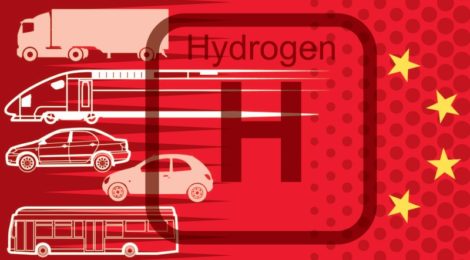
Hydrogen is the future
Wan Gang – China’s father of electric cars – believes that hydrogen is the future. In the past, his research on electric-vehicle and vision to make China an electric powerhouse changed the global automobile industry, advancing a move away from the combustion engine. China, the world’s biggest car market, is on the verge to embrace hydrogen fuel-cell vehicles in the same way Beijing did with electric vehicles (EV). Wan, a former Audi executive who became China’s science and technology minister, almost twenty years ago convinced leaders to invest on the then-new technology of vehicle electrification, as a way to boost economic growth but also to reduce the increasing levels of pollution and tackle China’s dependence on oil imports. By convincing carmakers and drivers to embrace the electric revolution thanks to government subsides, Wan made China home to one of every two EVs sold globally today. Wan, who is now a vice chairman of China’s national advisory body for policy making, said that “we should look into establishing a hydrogen society”, adding that “we need to move further toward fuel cell.” The government is therefore expected to commit resources to developing such vehicles. Beijing, while planning to stop the long-time subsidy program for the mature EV industry, plans to leave in place government funding for fuel-cell vehicles. This is set to weigh on demand slightly in the next two years, though strong growth will resume after that with sales set to hit 3.5 million electric cars in 2023. Sales will be further spurred by China’s new stringent rules to promote the production of greener cars. Major manufacturers will be punished unless they meet quotas for zero-and-low emission cars.

Despite the support of industry giants such as Toyota Motor Corp. and the benefits of fuel-cell vehicles (they refuel faster and are more suitable for driving long distances), they price for such a technology is still extremely high. According to Wan, China has the power to change this by raising the development of hydrogen-powered vehicles a national priority, a turning point that the industry has been waiting for. In Wan’s dreams, the shift toward hydrogen is a natural step in realizing a vision where electric cars dominate inner-city traffic, while buses and trucks powered by hydrogen tanks travel along the nation’s highways for long-distance travel. Hydrogen buses can travel beyond 500 kilometres on a full tank, versus about 200 kilometres for electric ones. This is a big opportunity in China, where there are five long-distance buses for every inner-city one.
Despite China’s abundance supply of hydrogen, the adoption of fuel-cell vehicles in China has been slow. In fact, there are only about 1,500 such vehicles in China today, compared with more that 2 million purely EVs. This is not happening in China only, but worldwide. As a matter of facts, high costs, lack of infrastructure and the complexity of storing hydrogen have slowed down its adoption. The recent fire at a refuelling station in Norway has also shown the matter of hydrogen’s flammability. “We will sort out the factors that have been hindering the development of fuel-cell vehicles,” said Wan. In China, buses seem to be quite ready for fuel cells, which use a chemical process to convert hydrogen into electricity, emitting only water vapor. China is the world leader in using electric buses – accounting for 99% worldwide – but they are mostly used in cities for short distances.
China has already started promoting the adoption of hydrogen vehicles in selected regions where local governments are setting up ecosystems that include hydrogen production, storage, transportation and refuelling.
Source: Bloomberg




